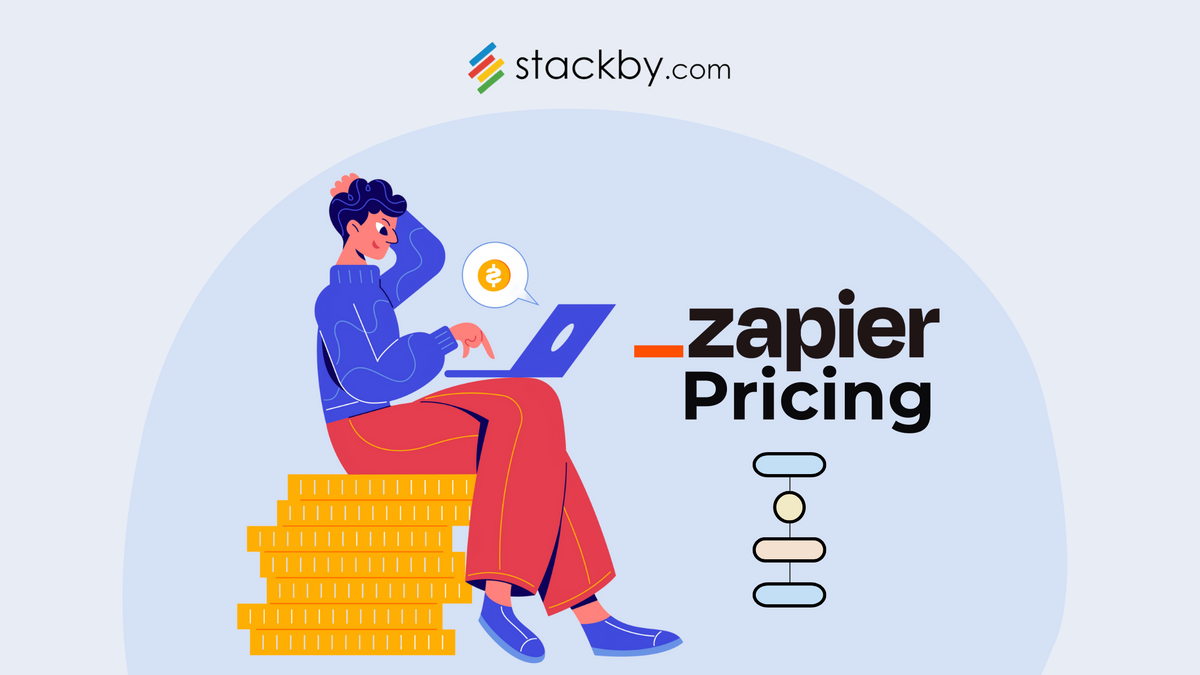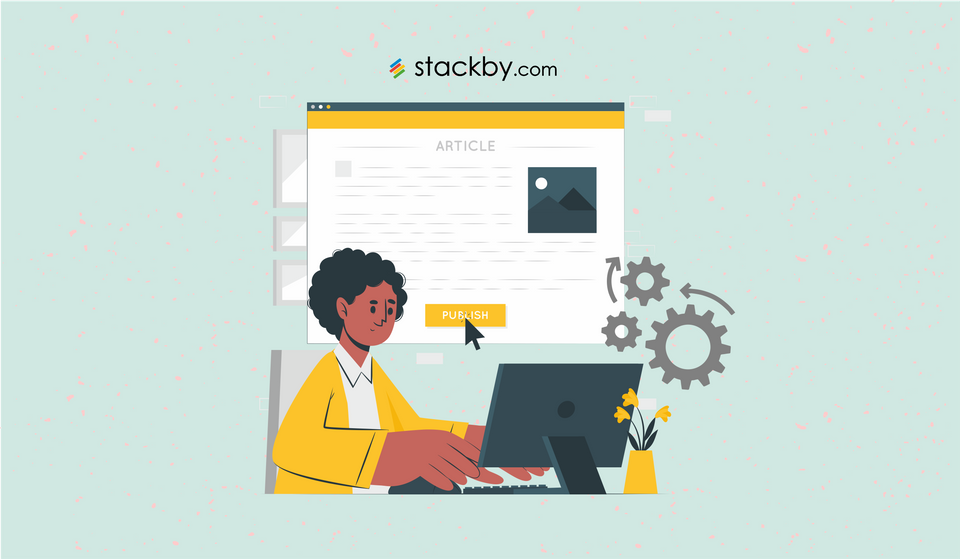Zapier Pricing and Alternatives: Guide & Pricing
Looking to automate workflows but unsure about Zapier’s pricing or fit? This guide breaks down Zapier plans and explores the best alternatives to suit your budget and needs.

Is Zapier Still Worth It in 2025?
There’s no denying that Zapier has earned its spot as one of the most popular automation platforms in the world. It has helped businesses, especially the non-technical teams, connect their favorite tools without writing code. But in 2025, it’s fair to ask: is Zapier still a smart investment?
Automation today is no longer optional. It’s critical. With leaner teams, tighter budgets and timelines, and more complex workflows, automating the repetitive tasks is how modern businesses can stay competitive and efficient. And Zapier, for a long time, led the charge with its simplicity and wide integration network.
But that same simplicity now comes at a growing cost. Zapier’s pricing model has evolved. While it still powers millions of workflows, many users are starting to reevaluate the cost-benefit ratio. Are we paying too much per task? Are there more affordable or flexible alternatives available?
In this guide, we’ll break it all down, Zapier’s pricing in 2025, who it’s best for, when it makes sense, and what to consider if you’re exploring alternatives.
What Is Zapier and How It Works ?
Zapier is an automation tool that allows users to link various apps without coding. It works on a basic logic: "If this happens, then do that." These automated workflows are called "Zaps."
Each Zap has a trigger (an event in one app) and an action (what happens in another app).
For example:
When someone submits a Type form survey → Add their details to your Mailchimp list.
When a Google Sheet row is updated → Send a Slack notification.
It's built for non-technical users, so you don’t need a developer to set this up. It has a drag-and-drop interface and thousands of ready-made integrations. Right now, Zapier works with more than 5,000 apps making it one of the most compatible tools you can find.
Why It Works
Zapier clicks with people because it’s just... easy. The interface is clean, no tech jargon, no steep learning curve. Even if you're just starting out with automation, it feels intuitive. And once set up, it quietly gets the job done, and there’s no need to keep checking if things are working.
Limitations
It’s not all sunshine though. The pricing goes up fast, especially since even tiny things like filters or formatting are counted as tasks. When compared to tools like Make or n8n, it lacks deeper conditional logic. And if you're on the free or starter plans, eyou might face some delays since real-time triggers aren't always available.
Why People Love Zapier
Despite growing competition, Zapier remains beloved for several reasons:
- True no-code simplicity: You can build workflows without writing a single line of code.
- Wide app ecosystem: It's compatible with almost every SaaS tool you're already using.
- Time-saving templates: Get started quickly with pre-built workflows for everyday tasks.
- Reliable performance: Your automations run smoothly in the background without interruptions.
For startups, marketers, freelancers, and SMBs who want things to "just work," Zapier often delivers exactly that.
2025 Zapier Pricing Breakdown
Zapier uses a task-based pricing model, where each action counts as a task, even logic filters, formatting steps, or branching paths.
Here's how the plans break down in 2025:
Free Plan : $0/month
Zapier’s Free plan is designed for individuals who are just starting out with automation or have very light usage needs. It allows users to run up to 100 tasks per month, which is suitable for simple workflows like automatically sending email alerts or posting social media updates. You’re limited to five single-step Zaps, meaning each automation can only have one trigger and one action, no branching or conditional logic. While basic, this plan still includes Zapier’s AI-powered capabilities and 15-minute task check intervals, making it a solid option for personal productivity or trying out automation before upgrading.
Professional Plan : Starts at $19.99/month (billed annually)
The Professional plan is where Zapier starts getting serious for individual users or freelancers who want to automate multiple parts of their workflow. This tier unlocks multi-step Zaps, so you can chain together several actions in a single workflow, and access more advanced features like filters, formatters, paths, and premium apps. It starts at 750 tasks per month, but you can scale it up based on your needs, the more tasks you run, the higher the cost. The update interval drops to 2 minutes, so your automations trigger faster. This plan is perfect for automating client onboarding, content pipelines, lead follow-ups, and other multi-step workflows that go beyond just basic actions.
Team Plan : Starts at $69/month (billed annually)
If you’re running automations across a small team or department, the Team plan brings collaboration into focus. It starts with 2,000 tasks per month, and offers 25 user seats. Just like the Professional plan, the cost increases as your task volume grows. The big differentiators here are shared folders, role-based access, and admin controls, so teams can build and manage Zaps together while maintaining clarity over who owns what. This plan is ideal for marketing teams, customer support groups, or agencies that need to coordinate workflows and centralize automation without stepping on each other's toes. You also get all the advanced features from the Professional plan, just scaled up for teamwork.
Enterprise Plan : Custom Pricing
Zapier’s Enterprise plan is built for large organizations that need to automate across multiple teams, departments, or business units, often with strict compliance, governance, and support needs. The pricing is entirely custom based on usage and requirements, so you’ll need to contact Zapier’s sales team to get a quote. This plan includes everything from the Team plan, plus enterprise-grade features like Single Sign-On (SSO), SCIM user provisioning, audit logs, custom data retention, and priority support. It’s a strong choice for companies that are running thousands (or millions) of tasks per month and want deep control over automation infrastructure, user roles, and security policies.
Summary of Tables, Interfaces, and Chatbots
Zapier isn't just about Zaps anymore. It now offers Tables, Interfaces, and Chatbots: three add-ons to help you build more, right inside the platform. These come with separate pricing tiers though: Free ($0), Pro ($13.33/month), Advanced ($66.67/month), and Enterprise (custom), all billed yearly. Chatbots skips the enterprise tier but offers custom pricing if you're managing over 20 bots.
- Tables act as your built-in datasheet. You can store, connect, and manage data directly.
- Interfaces lets you build mini front-end apps or forms to collect inputs and trigger Zaps.
- Chatbots bring conversational AI into the mix. You can create bots that answer questions, pull data, or guide users.
Each tool adds a layer of flexibility. And since they’re priced separately, you only pay for what you need.
Why Zapier Can Get Expensive Fast
Zapier’s pricing seems fair, until your automation usage scales. Here’s where the costs sneak in:
- Every action = a task: Even filters, formatters, or notifications are charged.
- Multi-step Zaps add up: A single workflow with 5 steps = 5 tasks per run.
- Premium app integrations (like Salesforce, QuickBooks) are locked behind paid tiers.
- Hidden task usage: Branches (Paths), delays, and logic filters all count.
For a business running 150–300 automations/month, it’s not hard to hit the 10,000 task ceiling, pushing teams into expensive Team or Company tiers.
Zapier + Stackby Integration
Stackby integrates seamlessly with Zapier, allowing users to automate repetitive tasks between Stackby and 5,000+ apps via Zapier.
Common Use Cases:
- Automatically send new Shopify orders to a Stackby inventory base
- Log customer support chats (from Intercom) into Stackby for tracking
- Trigger email alerts when a project status changes in Stackby
Zapier unlocks external workflows, especially when Stackby data needs to flow into CRMs, email tools, or other form platforms, especially ones not natively connected yet.
So when should you use Zapier with Stackby?
- You’re already using other apps and want Stackby in that mix
- You're already paying for Zapier and want to extend use
- You want to build multi-app workflows that go beyond what Stackby’s internal automation offers
Stackby Internal Automations vs Zapier
Stackby also offers its own internal automation engine, allowing users to:
- Set up triggers based on status changes, date, form submissions
- Run actions like sending emails, updating rows, pinging Slack or send Whatsapp messages.
- Automate workflows without task-based billing
Key Differences:
- Zapier = Better for cross-app workflows
- Stackby internal automation = Best for internal processes
Using both in tandem gives you a lot of power: use Stackby for internal triggers and actions, and Zapier when external app communication is needed.
6 Zapier Alternatives to Watch in 2025
If Zapier feels limiting or expensive, here are some growing alternatives:
Zapier vs Alternatives: Quick Comparison Table
Want to build your own automation workflows without coding? 👉 Try Stackby’s Zapier Alternative for Free and connect your favorite apps with ease.
1. Make (formerly Integromat)
- Visual scenario builder
- Powerful logic, HTTP modules, lower cost per task
- Great for developers or semi-technical users
2. N8n
- Open-source, self-hosted
- Fully customizable with code
- Ideal for privacy-focused orgs or engineers
3. Pabbly Connect
- Budget automation tool
- Lifetime plans available
- Popular among solopreneurs and Indian SaaS startups
4. Workato
- Enterprise-grade tool
- Highly scalable with deep integrations
- Expensive, but great for teams with complex IT infrastructure
5. IFTTT
- Best for personal or simple workflows
- Limited use for business automation
Looking for a simpler and budget-friendly Zapier alternative? See how Stackby compares and start automating your tasks today.
Is Zapier Worth It?
If you need reliability, thousands of integrations, and fast setup, Zapier still delivers in 2025.
But if you’re scaling or running complex logic-heavy workflows, its cost can quickly outpace its value.
The sweet spot is often in using Zapier selectively for cross-platform automation and leveraging platforms like Stackby’s internal automation for internal workflows.
Final Thoughts
Zapier isn’t dead, it’s just not the only option anymore.
With rising task costs, businesses must be more intentional. Audit your automation workflows. Calculate how many tasks you're using each month. And test alternatives that fit your actual needs.
For teams already on Stackby, start with its internal automation engine. It’s free, flexible, and powerful for internal workflows. Then use Zapier when you need to connect across the broader ecosystem.
👉 Try Stackby’s Zapier Integration today (free to start) and explore the power of building your own automations without hitting a task limit.
Automation is supposed to save money and time. In 2025, it should do both and in budget.

![Best 14 HR Database Software for Recruitment Agency [Free+Paid] [2025]](/blog/content/images/size/w960/2024/04/stackby--hr-database-software-blog-post-5.3.jpg)
![A Simple Guide on Workflow Management Software [Updated 2025]](/blog/content/images/size/w960/2021/12/work-management-blog.png)
![Step by Step Guide on How to Build Forms in a Database [2025]](/blog/content/images/2022/03/form-database-blog.png)
